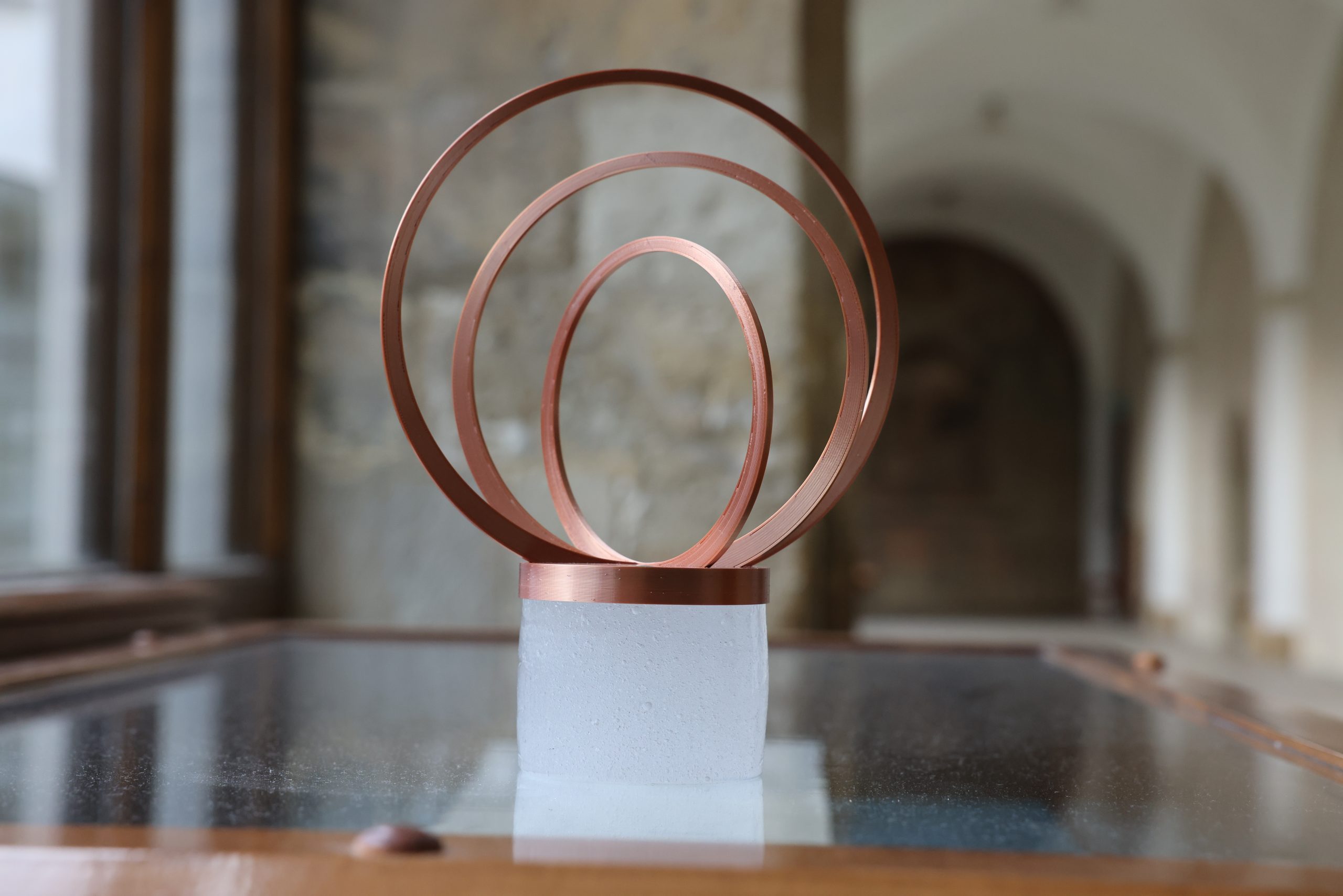
The President of the Czech Science Foundation (GACR), Professor Milan Jirsa, has awarded the five best scientific projects this evening at the Liechtenstein Palace of the Academy of Performing Arts in Prague. The award-winning basic research contributed to a significant deepening of knowledge in the given disciplines and paved the way for their further practical application. This year’s five laureates bring the total number of scientists who have received the award since 2003 to 100.
In the award-winning projects, scientists discovered, for example, how cells communicate with each other in autoimmune diseases, which opens up possibilities for their treatment. They studied the processes of permafrost thawing and freezing and their impact on the climate. They reconstructed the lost work of the ancient physician and philosopher Galen. They analysed complex mathematical models for use in real life and immediately applied them to innovations in agricultural technology. They also showed the impact of climate change on life in deserts.
“The selection of projects was extremely difficult again this year, as a substantial number of outstanding projects were nominated. This is further proof that the quality of Czech research is constantly improving and reaching world-class levels in many areas. The significant application overlap of this year’s award-winning projects is also important – some of the findings have already been put into practice during the research,” says Professor Milan Jirsa, GACR President.
The GACR President’s Award has been presented annually since 2003 in recognition of exceptional results achieved in grant projects completed in the previous year. The winners are selected on the recommendation of several hundred scientists who evaluate projects funded by the GACR. The awards are presented in five areas of basic research: Technical Sciences; Physical Sciences; Medical and Biological Sciences; Social Sciences and Humanities; and Agricultural and Biological-Environmental Sciences. This year’s five award winners bring the total number of laureates to 100.
The GACR President’s Award ceremony included attendees from the Minister of Science, Research and Innovation, the Ministry of Education, the Council for Research, Development and Innovation, several universities, the Czech Academy of Sciences, and dozens of other distinguished guests.
Award-winning projects
Technical Sciences
Prof. Ing. Jiří Mikyška, Ph.D., Faculty of Nuclear Sciences and Physical Engineering, Czech Technical University in Prague
Scientists have discovered what happens in thawing permafrost (project: Multiphase flow, transport and soil structure changes related to the freezing and thawing of water in subsurface layers)
Global climate change is increasingly affecting even remote areas covered by permafrost. Once completely frozen territories are now thawing and releasing a number of chemicals. These processes significantly affect the Earth’s atmosphere and living conditions on Earth. The research has produced new mathematical models and numerical simulations for predicting the behaviour of complex systems of freezing and melting water in rocks.
Physical Sciences
RNDr. Šárka Nečasová, CSc., DSc., Institute of Mathematics, Czech Academy of Sciences
Mathematical models help in biomedicine, meteorology and when working with heavy machinery (project: Mathematical theory and numerical analysis of equations of viscous Newtonian compressible fluids)
This award-winning project has significantly advanced mathematical solutions for models that describe complex physical phenomena. In real-world applications, these include air flow and fluid motion, such as the life-giving blood in our veins. The findings from the award-winning project have already been put into practice. Scientists are collaborating with companies such as Bobcat to optimise the functioning of heavy machinery.
Medical and Biological sciences
Mgr. Peter Dráber, Ph.D., First Faculty of Medicine, BIOCEV, Charles University
Modulating inflammatory communication between cells to suppress autoimmune diseases (project: The role of CMTM4 protein in signalling via the IL17 receptor)
The research team focused on finding new approaches to specifically suppress the harmful immune response in autoimmune diseases without disrupting the body’s natural defences. In this project, the scientists studied in detail the activation of an important pro-inflammatory receptor that recognises the inflammatory protein IL-17. The scientists discovered a previously unknown but, from the point of view of human immunity, a very important component of this receptor – the little-studied protein CMTM4.
Social Sciences and Humanities
Matyáš Havrda, Ph.D., DSc., Institute of Philosophy, Czech Academy of Sciences
Galen and the emergence of the scientific method: Reconstruction of a lost work (project: Aristotelian proof in the theory and practice of Galen’s medical science)
For centuries, Galen’s writings formed the basis of university education and contributed to the emergence of medicine as a scientific discipline. Scientists focused on reconstructing his lost treatise On Proof. From Greek and Arabic sources, they collected all available evidence about this important work, including previously unpublished texts, and presented a complete reconstruction of its content. In doing so, they expanded our knowledge of the history of science and the scientific method.
Agricultural and Biological-Environmental Sciences
Ing. et Mgr. Jiří Šmíd, Ph.D., Faculty of Science, Charles University
When the desert turns green: reptiles as witnesses to climate change (project: Genomic corridors in extreme conditions: historical and current population dynamics of desert reptiles)
Global climate change has not spared deserts throughout history. During the Quaternary climate fluctuations, for example, many of them turned into green oases. The project revealed the development of desert biodiversity over a longer period of time and helped understand the demographic history of individual reptile species. It also mapped the movements of their populations in response to changing environmental conditions.